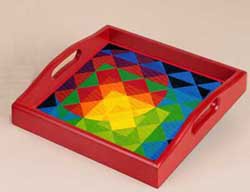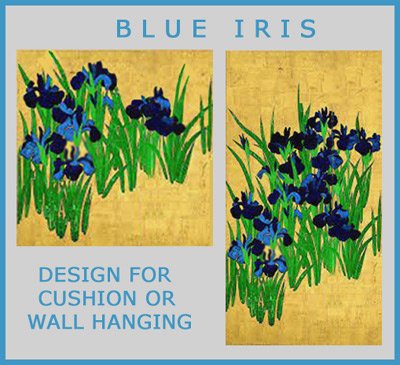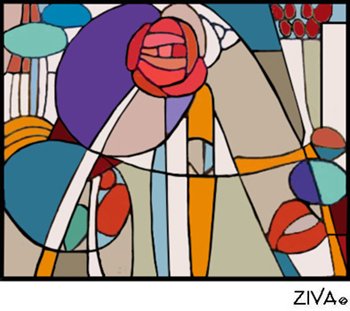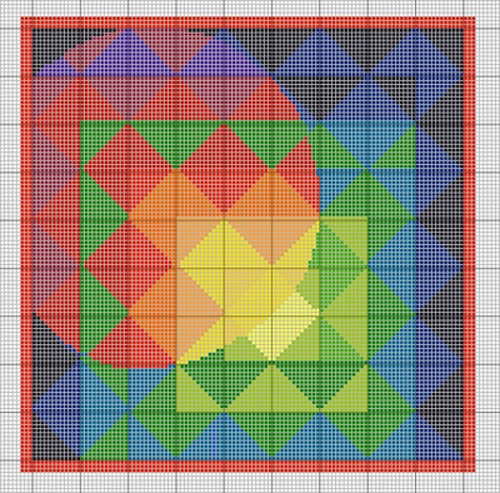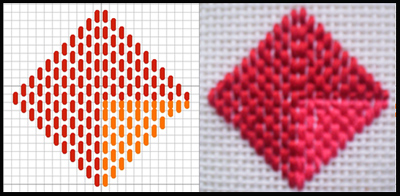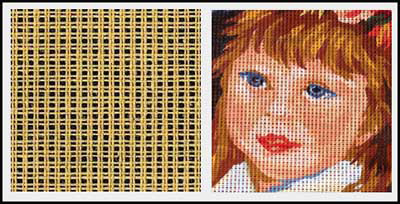| Back to Back Issues Page |
 |
|
VIVA ZIVA ! newsletter: Volume # 2230: FREE BAUHAUS DESIGN April 22, 2022 |
V I V A Z I V A ! n e w s l e t t e r
NEWSLETTER #30 FREE BAUHAUS DESIGN BASED ON THE ART AND DESIGN MOVEMENT FROM THE 1920’S
Thanks so much for subscribing to the VIVA ZIVA! Newsletter. We’ll be issuing a newsletter semi-annually, with a new free design each time... exclusively created for the VIVA ZIVA! newsletter.
Included is one of our RECENT PAINTINGS…. a Matisse design called ‘Vence’ adapted from his stained glass panels in the Vence chapel plus TWO NEW MACKINTOSH STAINED GLASS DESIGNS COMING SOON ! …. ….PLUS…… NOW AVAILABLE! ……TWO JAPANESE ‘BLUE IRISES’ adapted for cushions or wall art And…… a FREE BAUHAUS DESIGN inspired by the 1920’s Bauhaus Movement.
We have created this geometric design (left) called ‘Bauhaus Two-Centres’, based on the influential art and design movement that began in 1919 in Weimar, Germany. Other free designs? ……. Click here to see our newsletter back issues with free designs that may interest you!
WHAT’S IN EACH VIVA ZIVA! NEWSLETTER?
UPDATES NOW AVAILABLE …TWO NEW JAPANESE DESIGNS… one cushion and one wall art, adapted from original 18th century Japanese panels.
We adapted one of the original Japanese 18th century panels to create two asymmetrical delicate designs called ‘BLUE IRISES’ cushion (above left) and ‘BLUE IRISES’ wall hanging (above right). In both designs we retained a rich disciplined colour palette range of blue irises in bloom, and their green foliage with gold-coloured background. Note: We can create two different painting techniques for the background. Your choice! Go to JAPANESE CUSHION DESIGNS or to JAPANESE WALL ART DESIGNS for more background and details on how we created these designs. Go to our SHOPPING PAGES for details about sizes and painting technique for both designs.
RECENT PAINTINGS
'VENCE’ Our ‘Vence’ stained-glass cushion design was adapted from Henri Matisse’s stained-glass panels in the Rosaire chapel in Vence, France. For the stained glass panels Matisse used a palette of a range of three colours: an intense yellow for the sun, a range of intense greens for vegetation and cactus forms, and vivid blues for the Mediterranean. To make your stitching pleasurable, we include in our kit, a coded image (above right) of the range of blues we used, which relate to the coded colour listing we provide. Go to STAINED–GLASS CUSHION DESIGNS to see other Henri Matisse stained glass designs plus those of Frank Lloyd Wright and Charles Rennie Mackintosh.
NEW DESIGNS COMING SOON! ……. THREE MORE STAINED-GLASS CUSHION DESIGNS The evident fluidity and asymmetry of the Art Nouveau period in these Charles Rennie Mackintosh designs merges well with the curved abstract shapes evoking the characteristics of the early Modernist Movement.

'ROSE ETERNAL N° ONE' We already created a subtle version of this design called “A Rose is a Rose” for a tote bag, but now it’s available as a cushion called “Rose Eternal N° One”!
'ROSE ETERNAL N° TWO'
Same design as ‘ROSE ETERNAL N° ONE’ …. BUT we’ve changed some of its colours to create a much bolder and brighter palette by adding range of blues, turquoises, and golds!
'MACKINTOSH ROSE '
A larger, much bolder design and a greater use of the same accent colours as 'ROSE ETERNAL N° 2'! THEY ALL WORK WELL TOGETHER! FREE DESIGN 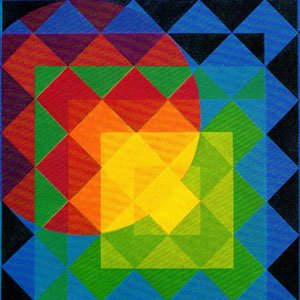
The Bauhaus movement, founded in 1919 in Germany, championed a geometric, abstract style, which focused on simple, rational, functional design, geometric forms such as the triangle, square, and circle and favoring asymmetry over symmetry. Its aesthetic continues to influence architects, designers, and artists even to-day over 100 years later!
Our free design is a perfect example of the Bauhaus Style with its asymmetrical design of inverted squares inside progressively larger squares! It also depicts space using a bold gradation of colour…. completed with a large multi-coloured asymmetrical circle! Have a look at other Bauhaus designs in our ZIVA Collection.
WHAT DO YOU WANT TO MAKE WITH THIS FREE DESIGN? 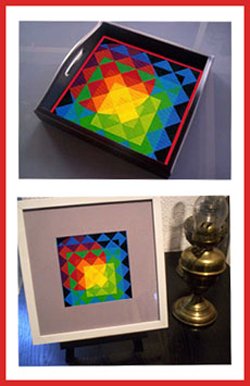
Here are some ideas…
READING THE CHART: BAUHAUS DESIGN CHART
YOUR STITCH TO TRY: THE BRICK STITCH You can, of course, use the most popular stitch, the Tent Stitch, or even the Cross Stitch, and it would look spectacular! OR, because the design is completely on an angle, any stitch that can work on 45°, such as the BRICK STITCH. We stitched one of the squares in the Brick Stitch, (with its chart below) to give you an idea what it would look like. You could also change the direction of one colour to give more texture to the design. Note: We doubled the yarn on our needlepoint with the Brick Stitch to make sure it covered the canvas.
YARN COLOURS All the yarns for the Bauhaus Squares and Circle were chosen from DMC Mouliné Spécial 6-ply cotton range of colours. They are readily available at your local needlepoint shop or online:
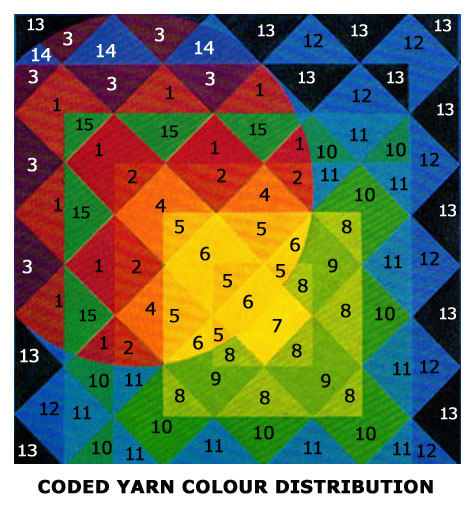
YARN QUANTITIES As a guide for the Bauhaus threads for 9” design, you will require approximately the following 6-ply cotton thread quantities with 2 threads on your needle:
OTHER MATERIALS You will also need :
Go to the ZIVA site for more detail info on the MATERIALS required.
MAKING UP SUGGESTIONS
ASK THE ZIVA DIVA! Hi ZIVA, I was given some Penelope canvas, and I wondered what types of projects would work with it? Any ideas? Thanks, Peggy, UK ANSWER: Hi Peggy, Thank you contacting us at ZIVA Needlepoint Designs. In needlepoint and fabric shops or online, have a look at printed canvases with traditional 18th and 19th century patterns on them and you will find that they are usually printed on Penelope canvas. This is a very traditional 19th century method of using the Double Thread or Penelope canvas, which is ideal for adding a lot of detail in certain areas and a larger stitch for other areas. The canvas is stitched in gros point (large stitch), used over pairs of threads, and petit point (small stitch) over single threads …….a perfect combination for creating specific detail in flowers, figures, faces etc. in a specific area of the tapestry.
This image of a printed Penelope canvas of a child’s face (above right) shows how the subtle nuances in her skin, perfect for a Penelope canvas (above left). It can also be used less traditionally!
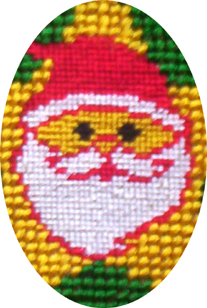
We’ve used this type of canvas in one of our newsletters (#2318) for a Christmas Stocking design. You can see the contrast between the two stitches in this close-up of SANTA’S face, hat and beard! I hope the above explanation helps you determine how the Penelope canvas can work when selecting the next project that you want to stitch. Good luck! Best regards, Sylvia McLeod
WHAT NEXT? The next VIVA ZIVA! Newsletter #2231 will be issued in the fall of 2022 . I’ll be including:
Please contact me if there is a particular stitch or technique you’d like me to use for a free design in a future newsletter! Share this newsletter with friends and relatives. Looking forward to sending you the next newsletter! Sylvia McLeod
|
| Back to Back Issues Page |
